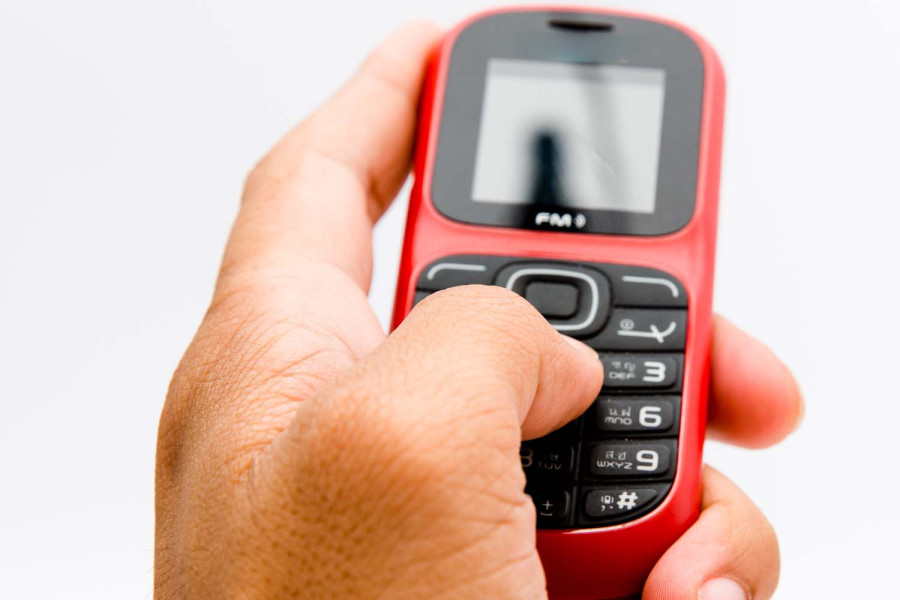Money
USSD is a payment method accessible to all, report says
The payment channel allows financial transactions to be made using mobile phones’ basic features without internet connectivity.
Post Report
Nepal has problems galore with mobile communication due to challenging topography, which often results in poor networks and unreliable internet, particularly in the mountain and hilly belts. A study has suggested an Unstructured Supplementary Service Data (USSD)-based payment system as an alternative for financial access.
The USSD channel for payments allows financial transactions to be made using the basic features of mobile phones without internet connectivity. It is one of the most widely used offline payments, aiming to financially deepen and include the marginalised and under-banked population in banking services.
It is a protocol used by the Global System for Mobile Communication (GSM) network to communicate with payment service providers’ platforms. USSD is a session-based, real-time messaging communication technology accessed through a string, usually starting with an asterisk (*) and ending with a hash (#), for instance *500#.
According to Nepal’s central bank study report on the USSD-based payment system and its regulations, USSD technology is considered a cost-effective, faster, and handset-agnostic mode of payment due to its short turnaround time and data privacy.
The report said that in Nepal, 50 percent of adults from rural areas and 40 percent of adults from urban areas still lack an account at a financial institution.
USSD-based payment allows merchant payments and accessible credit facilities to people, especially in rural and marginalised settings.
USSD offers access to digital financial services in areas where telecom network connectivity is poor for voice telephony or where there is no or poor internet connectivity.
To use the service, you do not require a smartphone.
The report said that the feature phone ownership rate in Nepal is higher than that of smartphones in rural municipalities and provinces.
Madhesh Province has 12.97 percent feature phone penetration and 11.60 percent smartphone penetration. In Karnali Province, there is 4.51 percent feature phone penetration and 3.21 percent smartphone penetration.
Similarly, Sudurpaschim Province has 6.84 percent feature phone penetration and 5.42 percent smartphone penetration.
The report said this provides opportunities to increase financial inclusion by targeting feature phone users in rural municipalities and select provinces with a USSD-based payment system.
The expert says that if mobile operators start a USSD-based payment system, it will definitely aid in financial inclusion and make daily transactions easy with just a text message.
Most rural and even urban populations are not used to app-based payment services, and a USSD-based payment system will allow those populations to make transactions quickly and conveniently.
According to the report, small and medium entrepreneurs in rural areas benefit from it by taking credit and making payments.
Sanjib Subba, a fintech expert, said that the USSD-based payment needs to be implemented effectively as many people still use feature mobile phones, so there is a connectivity issue for financial inclusivity.
“In a country like Nepal, where internal migration is huge, USSD payments can be made easily by sending money person-to-person (P2P) and person-to-merchant (P2M),” said Subba.
He added that a USSD-based payment system needs to be pushed.
Telcos are the primary carriers and telecom service providers like Nepal Telecom and Ncell, which help bring financial inclusivity to the last mile through the USSD.
Experts said the cost of moving money through a USSD-based payment system needs to be minimal or even zero.
In 2009, Hello Paisa, in partnership with Laxmi Bank, introduced a USSD-based payment system in Nepal.
Nepal started using a USSD-based payment system for mobile financial services in 2021. In March 2021, the central bank issued the payment service provider license to Nepal Digital Payments Company (NDPC) Limited to implement USSD-based mobile financial services.
NDPC was established with a key stake in Nepal Telecom and Rastriya Banijya Bank Limited. In September 2021, NDPC launched the NamastePay *500# USSD service for its NamastePay wallet, which has basic features such as user registration, mobile top-up, and P2P transfer.
However, the uptrend in app-based financial systems like eSewa wallet (commenced in 2010), mobile banking applications (initiated in 2012), Inter-bank payment system (IPS, launched in 2016), connectIPS (launched in 2018), and others began well before 2021, offering offer sophisticated user experience valued by customers, the adoption of USSD channel, which has its underlying limitations, was constrained.
According to the study report, first, customers extensively use app-based systems with intuitive user experience; USSD may not be quickly adopted as the primary payment channel.
This is evident from the lower adoption of NDPC’s USSD-based mobile financial system. However, according to the study, the USSD channel can be an alternative when app-based online payment systems cannot be accessed.
Second, it can be costly for the customer and the financial service provider. If the session dropout rates are not controlled, customers may be liable for higher transaction fees.
For financial service providers, adding USSD as a channel by bearing the capital expenditure and operational costs may not be justifiable, as people have already adopted innovative app-based payment systems, the report said.
Third, as USSD menus are generally complex to navigate, it is challenging to create appropriate user awareness considering customers' geography, administrative construct, and literacy level.
The report said that USSD could benefit customers as an alternative to existing payment systems by providing easy mobile phone top-up or recharge service using the USSD channel when the customer runs out of balance and lacks internet connectivity.
It enables elderly people and others who are accustomed to feature phones to access government-to-person (G2P) payments (such as pensions and other government transfers) through the USSD channel.
The report recommends that the telecommunication authority mandate all mobile network operators to provide USSD for mobile financial services. To ensure a uniform customer experience, the authority should explore the possibility of mandating all mobile network operators to implement a common USSD code for mobile financial services.




 10.12°C Kathmandu
10.12°C Kathmandu














